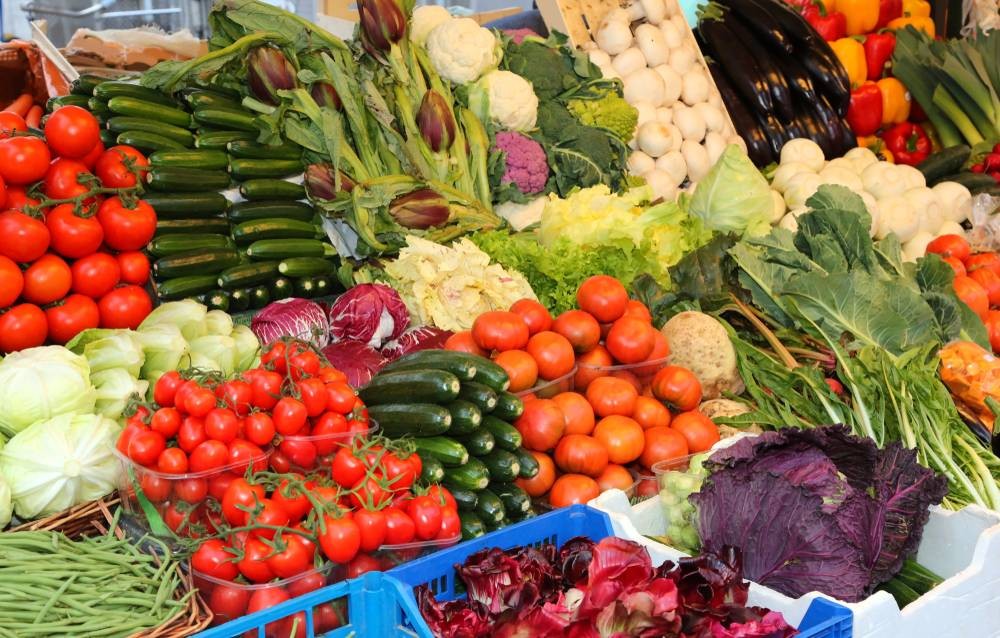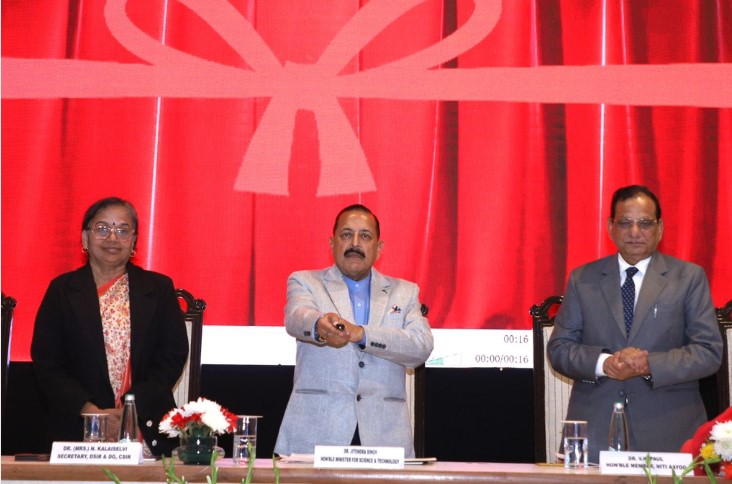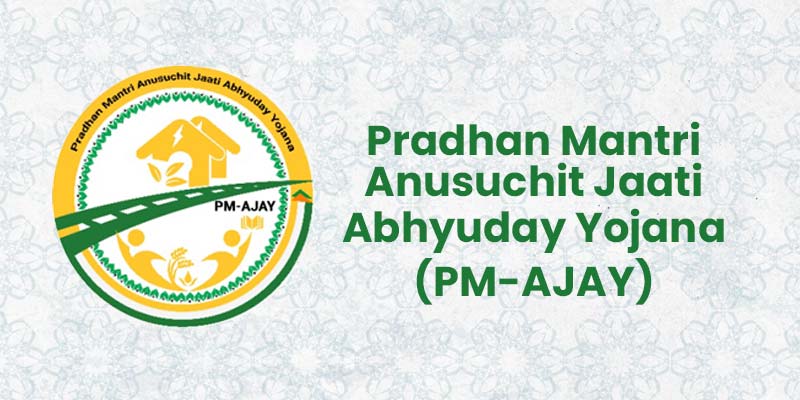Market Intervention Scheme (MIS)

- 14 Feb 2025
In News:
To enhance the efficacy and wider adoption of MIS, the Government of India revised the guidelines in 2025.
Key Highlights:
- Objective: It aims to provide price support for perishable agricultural and horticultural commodities not covered under the Minimum Support Price (MSP) regime. It prevents distress sales during periods of excessive production and sharp price declines.
- Implementing Authority:The scheme is under the Department of Agriculture & Farmers’ Welfare and is now a component of the PM-AASHA (Pradhan Mantri AnnadataAaySanrakshan Abhiyan) umbrella scheme.
- Eligibility & Activation:
- Implemented on the request of State/UT Governments.
- Triggered when market prices fall by at least 10% compared to the average price of the previous normal year.
- Nature of the Scheme:
- Ad-hoc price support mechanism operational during sudden market crashes.
- Cost-sharing pattern between Centre and States is 50:50, and 75:25 for North-Eastern states.
- Procurement Provisions (Revised 2025):
- Procurement limit increased from 20% to 25% of total production of the crop.
- Direct Benefit Transfer (DBT) mode introduced: States may directly compensate farmers for the price difference between Market Intervention Price (MIP) and actual selling price.
- Physical procurement is optional under the revised scheme.
- Authorized Procurement Agencies:
- Central Nodal Agencies like NAFED (National Agricultural Cooperative Marketing Federation of India) and NCCF (National Cooperative Consumers’ Federation of India).
- Farmer Producer Organizations (FPOs), Farmer Producer Companies (FPCs), and state-nominated agencies can also participate in procurement, storage, and transportation.
- Support for Transportation and Storage:
- Reimbursement of storage and transport costs is provided by Central Nodal Agencies for TOP crops (Tomato, Onion, Potato).
- This provision helps balance regional price disparities between producing and consuming states.
- Significance:
- The revamped MIS strengthens market resilience for perishable crop producers.
- Enhances State participation, reduces post-harvest losses, and ensures remunerative returns through institutional and technological support mechanisms.
SevaBhoj Yojana

- 14 Feb 2025
In News:
Launched in August 2018 by the Ministry of Culture, the SevaBhoj Yojana is a Central Sector Scheme aimed at supporting charitable and religious institutions that provide free food (langar, prasad, bhandara) to the public without discrimination.
Key Highlights:
- The scheme provides reimbursement of the Central Government’s share of Central Goods and Services Tax (CGST) and Integrated Goods and Services Tax (IGST) paid on the purchase of specific raw food items used in preparing meals.
- Objectives of the Scheme
- Reduce the financial burden on charitable/religious institutions engaged in feeding the public.
- Encourage the tradition of community kitchens and public service across diverse religious institutions.
- Promote inclusive religious philanthropy while ensuring transparency and accountability in public spending.
Key Features
Feature Details
Launched By Ministry of Culture, Government of India
Year of Launch August 2018
Target Beneficiaries Temples, Gurudwaras, Mosques, Churches, Ashrams, Monasteries, etc.
Reimbursed Taxes CGST and Central Share of IGST
Scope of Benefit Raw food items used for free food distribution
Coverage Threshold Institutions must serve free food to at least 5000 people/month
Required Duration of Operation Minimum 3 years of continuous food service
Eligibility Criteria
To qualify for the scheme, institutions must:
- Serve free food to a minimum of 5,000 people per month.
- Be in operation for at least three years prior to application.
- Be registered under:
- Section 10 or 12AA of the Income Tax Act, or
- Societies Registration Act, or
- Relevant public trust laws, or
- Statutory religious bodies constituted under law.
- Possess a District Magistrate’s certificate confirming their ongoing food distribution service.
Implementation Mechanism
The scheme ensures transparency and streamlined reimbursement through a digital and multi-tier process:
- Institutions register on the NGO Darpan Portal of NITI Aayog.
- Apply through the Central Sector Monitoring System (CSMS) Portal of the Ministry of Culture.
- Submit relevant documents to the Nodal Central Tax Officer in their State/UT.
- On verification, a Unique Identity Number (UIN) is issued.
- Verified tax claims are forwarded by the concerned GST Authority to the Ministry.
- The Ministry releases the sanctioned amount to the GST Authority, which reimburses the institution.
Governance and Outreach
- The Ministry promotes the scheme through official websites and social media platforms.
- Efforts are made to ensure equitable representation of all religions and communities.
- As of January 2025, several institutions across states have benefited from the scheme, though individual beneficiary counts are not collected.
S?janam

- 14 Feb 2025
In News:
In a significant stride toward sustainable healthcare and waste management, India launched its first indigenous Automated Biomedical Waste Treatment Plant, named S?janam, on April 13, 2025, at AIIMS, New Delhi.
Developed by the CSIR-National Institute for Interdisciplinary Science and Technology (CSIR-NIIST), Thiruvananthapuram, under the Ministry of Science & Technology, this innovative rig marks a paradigm shift in handling biomedical waste, moving away from conventional, polluting incineration techniques.
Why this matter?
India generates approximately 743 tonnes of biomedical waste daily (CPCB, 2023). Safe disposal has been a persistent challenge due to limited infrastructure, high costs, and environmental concerns. The launch of S?janam aligns with the government’s push for “Waste to Wealth” and environmentally responsible healthcare infrastructure, as part of the Atmanirbhar Bharat and Swachh Bharat initiatives.
What is S?janam?
- An automated, eco-friendly biomedical waste treatment rig.
- Designed to disinfect pathogenic waste like blood, urine, sputum, and lab disposables.
- Does not use incinerators, which release toxic emissions such as dioxins and furans.
Key Features & Capacity
Feature Details
Disinfection Process Non-incineration, antimicrobial treatment
Daily Treatment Capacity 400 kg of total biomedical waste
Organic Waste Handling Initially handles 10 kg/day of degradable medical waste
Environmental Safety Neutralizes foul odor; releases pleasant fragrance
Health Safety Minimizes human exposure and risk of contamination
Validation Third-party tested; treated material safer than organic vermicompost
Significance for Public Health and Environment
- Reduces dependency on expensive, energy-intensive incinerators.
- Eco-friendly solution that prevents toxic emissions and groundwater contamination.
- Aligns with Bio-Medical Waste Management Rules, 2016, which mandate safe segregation, treatment, and disposal.
- Enhances India’s capability to respond to health crises (e.g., pandemics), where waste generation spikes.
Strategic Implications
- Promotes indigenous technological innovation under “Make in India.”
- Offers a scalable solution for both urban and rural healthcare setups.
- Contributes to India’s climate commitments by cutting healthcare-related emissions.
NITI Aayog Policy Report on Expanding Quality Higher Education
- 14 Feb 2025
In News:
NITI Aayog released a comprehensive policy report titled ‘Expanding Quality Higher Education through States and State Public Universities (SPUs)’, focusing on the development of higher education institutions, particularly public universities in India.
The report aims to enhance the quality, funding, governance, and employability outcomes within SPUs, which contribute to around 80% of the country's higher education system.
The document, the first of its kind in India, presents a detailed analysis of vital indicators like quality, funding, financing, governance, and employability over the last decade, supported by stakeholder consultations with over 20 states and Union Territories, Vice Chancellors, academicians, and State Higher Education Council Chairs. The report includes nearly 80 policy recommendations, along with 125 performance indicators, aiming to address long-standing challenges within SPUs.
Key Findings from the Report
- Funding:
- Maharashtra leads in funding for higher education, with Bihar and Tamil Nadu following closely behind.
- On the other hand, states like Sikkim, Arunachal Pradesh, and Nagaland have the lowest funding for higher education, highlighting regional disparities.
- University Density:
- The national average university density is 0.8 universities per lakh population. However, states such as Sikkim, with a density of 10.3, and Arunachal Pradesh, Ladakh, Meghalaya, and Uttarakhand have significantly higher densities. In contrast, states like Bihar, Uttar Pradesh, West Bengal, and Maharashtra have lower densities compared to the national average.
- Female Enrolment:
- Kerala, Chhattisgarh, and Himachal Pradesh have achieved higher female enrolment rates than males, which reflects positive gender inclusivity trends in certain regions.
- Challenges:
- Infrastructure deficits, including a lack of quality facilities and resources.
- A shortage of faculty and staff, particularly in advanced fields such as MTech and Ph.D. levels.
- Insufficient investment in research and development (R&D).
- Outdated courses, syllabi, and curricula, which are not aligned with industry needs.
- Financial constraints due to over-reliance on traditional revenue sources like admission fees and state grants.
- Administrative delays in fund sanctioning and the absence of frameworks for securing loans through financial institutions.
Policy Recommendations
The report proposes several reforms to address the aforementioned challenges, with a focus on improving educational quality, securing better funding, enhancing governance, and boosting employability:
- Funding and Investment:
- Increase the combined investment in education to 6% of GDP, as recommended in the National Education Policy (NEP) 2020.
- Increase R&D investment (both public and private) to 2% of GDP, as recommended in the Economic Survey 2017-18.
- Creating Centers of Excellence:
- SPUs should form clusters and focus on addressing local challenges by establishing Centres of Excellence. These centres should focus on region-specific issues to drive academic and practical advancements.
- Governance Reforms:
- Enhance governance structures at SPUs, empowering Vice Chancellors, faculty, and staff through targeted capacity-building initiatives.
- States may consider setting up dedicated finance agencies, similar to the Higher Education Financing Agency (HEFA), to fund infrastructure and research development specifically for SPUs.
- Financial Innovations:
- Develop financial frameworks to increase investment in education, ensuring access to timely funds, and reducing dependency on state grants or admission fees.
- Industry-Academia Collaboration:
- Strengthen the link between academia and industry to ensure that the curricula are relevant and prepare students for the job market. This can be achieved through increased partnerships, internships, and practical learning opportunities.
Pradhan Mantri AnusuchitJaatiAbhyuday Yojana (PM-AJAY)

- 14 Feb 2025
In News:
It is a 100% Centrally Sponsored Scheme initiated by the Ministry of Social Justice and Empowerment. The scheme aims at the socio-economic upliftment of the Scheduled Caste (SC) communities, particularly targeting the reduction of poverty through various initiatives that focus on skill development, infrastructure, and income-generating projects.
Key Highlights:
- Launch and Funding: Launched in 2021, the scheme is fully funded by the central government, though states and Union Territories (UTs) have the option to contribute additional funds from their own resources. PM-AJAY is the consolidation of three pre-existing schemes:
- Pradhan Mantri Adarsh Gram Yojana (PMAGY)
- Special Central Assistance to Scheduled Castes Sub Plan (SCA to SCSP)
- BabuJagjivan Ram Chhatrawas Yojana (BJRCY)
- Objectives of PM-AJAY: The scheme is focused on improving the overall well-being of SC communities by:
- Reducing poverty through income-generating schemes, skill development, and infrastructure projects.
- Promoting social and economic development by improving literacy rates, educational enrolment, and providing better livelihood opportunities.
- Transforming SC-majority villages into model villages with integrated development, enhancing socio-economic indicators like education, healthcare, and financial inclusion.
- Eligibility Criteria
- Scheduled Caste (SC) persons living below the poverty line (BPL) are eligible for benefits.
- For infrastructure development, villages with 50% or more SC population are prioritized for grants.
- Key Components of PM-AJAY: The scheme comprises three core components:
- Adarsh Gram Development (formerly PMAGY): Aims to develop SC-majority villages into model villages with holistic improvements in education, healthcare, infrastructure, and skill development.
- Grants-in-Aid for District/State-Level Projects (formerly SCA to SCSP): Financial assistance is provided for livelihood development projects, including skill development programs and infrastructure projects, to generate sustainable income for SC communities.
- Construction of Hostels in Higher Educational Institutions (formerly BJRCY): Focuses on promoting higher education among SC students by constructing hostels in top-ranked institutions according to the National Institutional Ranking Framework (NIRF). This aims to reduce dropout rates and enhance access to quality education.
Special Provisions under the Grants-in-Aid Component
- 15% of the total grants are exclusively allocated for income-generating schemes for SC women.
- 30% of the grants are allocated for infrastructure development in SC-dominated areas.
- 10% of funds are reserved for skill development programs.
- The scheme encourages the formation of SC women cooperatives for producing and marketing consumer goods and services.
Achievements (2022-23)
- 1,260 villages were declared as Adarsh Gram in the financial year 2023-24 under the Adarsh Gram component.
- Nine new hostels were sanctioned under the Hostel Construction component.
- Perspective plans for seven states were approved under the Grants-in-Aid component.
